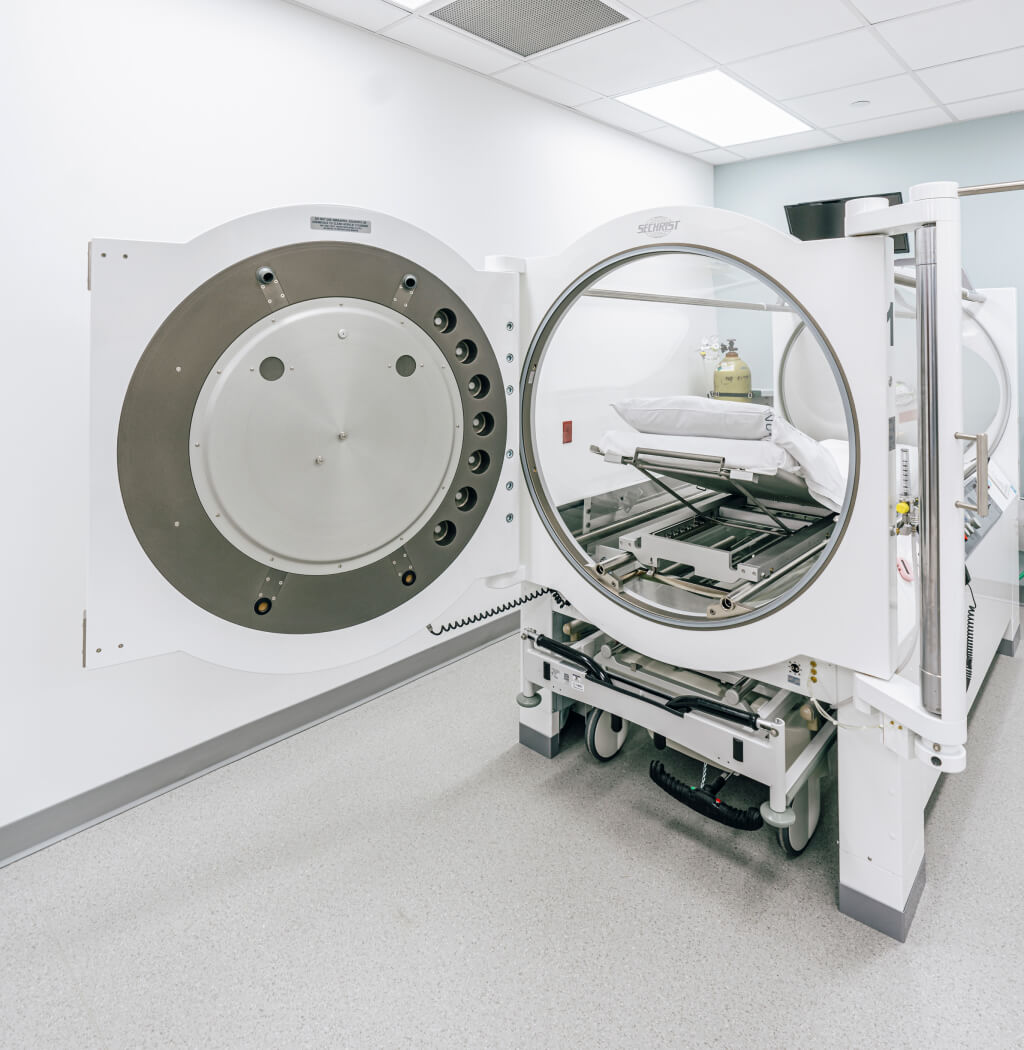CMS Approved Indications
for Hyperbaric Oxygen Therapy
Hyperbaric oxygen therapy (HBOT) is perhaps most associated with diving injuries and chronic wound healing, but it’s recognized as a safe and effective treatment for more than a dozen acute and chronic conditions*, from diabetic foot ulcers to radiation injury. Specifically, HBOT is approved by the Centers for Medicare & Medicaid Services (CMS) to treat the following conditions:
Soft tissue radionecrosis (tissue damage caused by radiation)
Compromised skin grafts/skin flaps
Chronic refractory osteomyelitis (bone infection)
Acute traumatic peripheral ischemia (tissue injury to an extremity caused by lack or loss of blood flow)
Crush injuries/suturing of severed limbs
Progressive necrotizing infections, such as necrotizing fasciitis (death of tissue caused by fast-spreading bacterial infection)
Acute peripheral arterial insufficiency (which can lead to ulcers and other non-healing wounds)
Actinomycosis (rare bacterial infection that causes sores and abscesses)
Gas embolism/air embolism (blockage of blood supply to a vital organ)
Gas gangrene/myonecrosis (bacterial infection)
Carbon monoxide intoxication/poisoning
Cyanide poisoning
Decompression illness (sometimes called diving sickness)
Aside from the Centers for Medicare & Medicaid Services (CMS)-approved conditions above, HBOT therapy is continually being researched as a viable treatment for a range of acute and chronic conditions.

The Effects of HBOT For Treated Patients Include:
Hyper-oxygenation
- Delivery of oxygen to hypo-perfused tissues
- Promotes neovascularization
Enhanced Antimicrobial Activity
- Aids in oxygen dependent killing of bacteria
- Facilitates oxygen dependent transport of antibiotics
Vasoconstriction
- Decreases tissue edema
Reversal of Ischemia-Reperfusion Injury
- Limits leukocyte adhesion
Getting Started With Treatment
Many physicians that we hear from are looking for referral sources for advanced wound care solutions - or looking to start their own facility and expand their services lines. If you are treating with a patient who might be a candidate for hyperbaric oxygen therapy the first step is to find a treatment center near you. The facility you choose will be able to set you up a consultation with the patient to get a treatment plan created and will work directly with your office every step of the way. Treatments for a wide variety of conditions are covered by Medicare and most major insurance carriers. However, there are certain conditions that must be met prior to treatment for each condition before insurance coverage will apply. The wound care center you choose will go over all of these details during the consultation to ensure that the patient receives the best care possible and that any referral conditions have been met.

